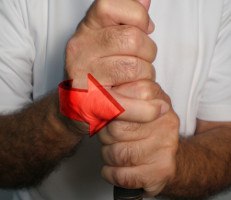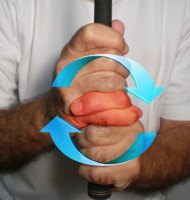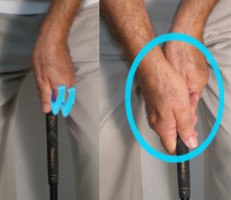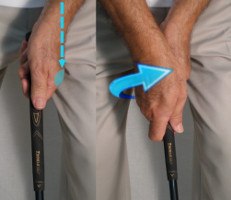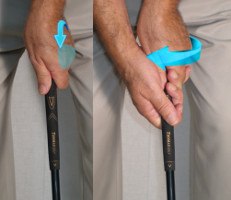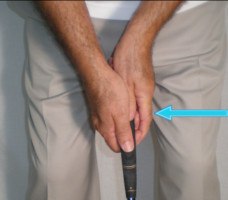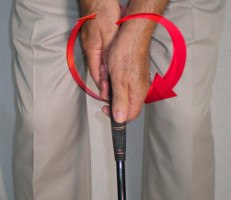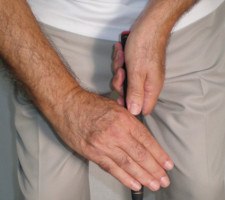Pros and Cons of Every Golf Grip Style |
Best Grip? Overlapping vs Interlocking |
Grip style: Vardon (overlapping)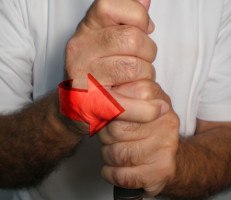 |
Hand position: Very strong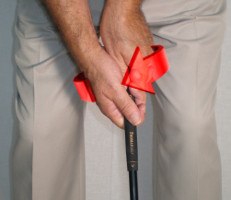 |
Putting grip style / hand position: Reverse overlap / neutral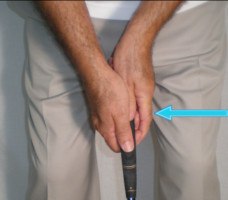
|
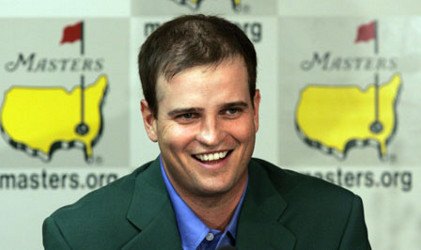
Zach Johnson’s grip is one of the strongest on the PGA TOUR. So is his game.
The down-to-earth Iowan announced his presence by winning the 2007 Masters, and he’s remained a world-class player ever since. He’s the picture of consistency, if not textbook technique.
Johnson’s hands are turned well to his right on the club’s handle, with the glove’s logo and his right palm pointed at about a 45° angle to the ground. Among major champions, perhaps only Fred Couples, John Daly and Paul Azinger grip the club in such a strong position.
Johnson isn’t nearly as powerful as that trio, but he’s much more accurate. He ranked among the tour’s top 14 in driving accuracy every year from 2007-14, typically hitting around 70% of fairways. Johnson’s secret? A swing built on excellent body rotation, and a follow-through which keeps the clubface square and prevents Johnson’s hands from getting too active.
As a short hitter, however, he gets fewer opportunities to reach par 5s in two, so he must compensate on the greens. He does so with an unorthodox yet deadly method. It all starts with Zach Johnson’s grip.
His hands’ placement on the club isn’t unusual; Johnson employs a standard reverse overlap grip and a neutral setup. Where most everyone else aligns their hands directly over or slightly in front of the ball, though, Johnson’s are shifted back. This creates a pronounced “cup” in his left wrist and angles the shaft away from the target.
Like his odd full-swing grip, Johnson makes his putting grip work very, very well.
